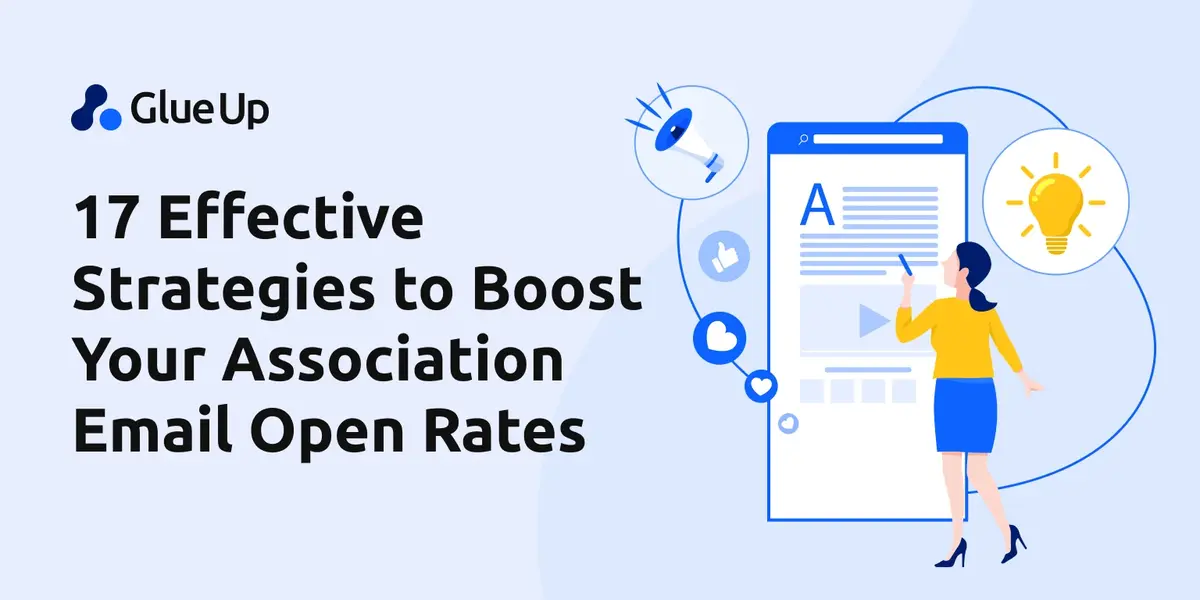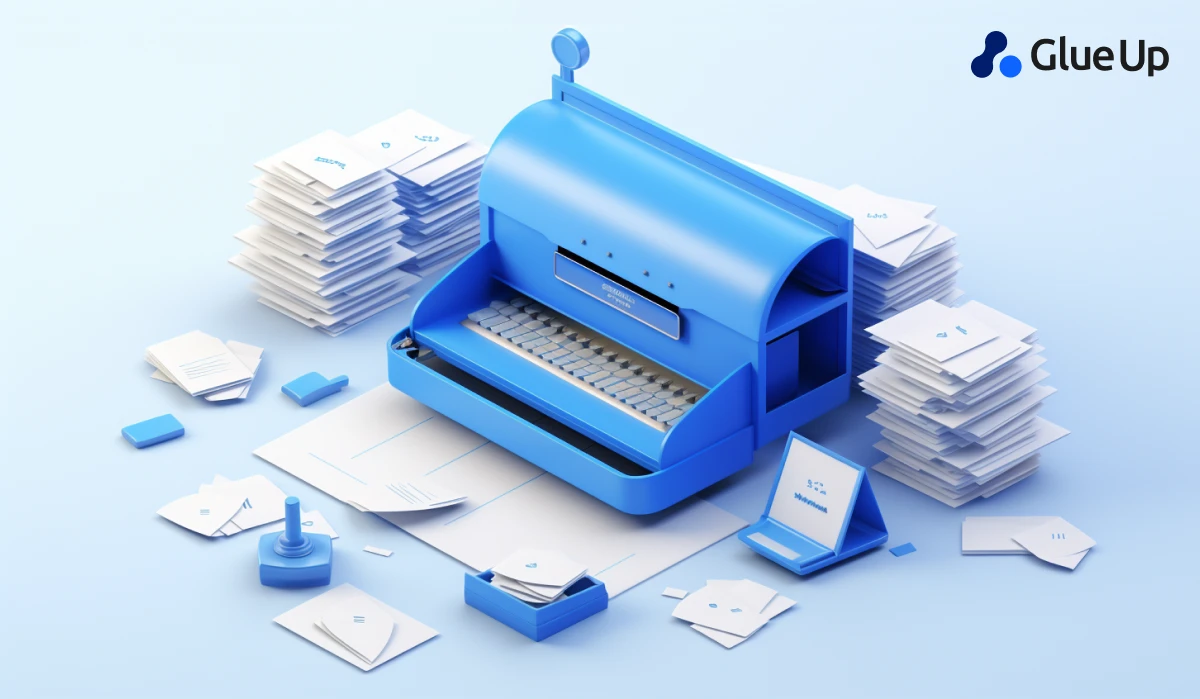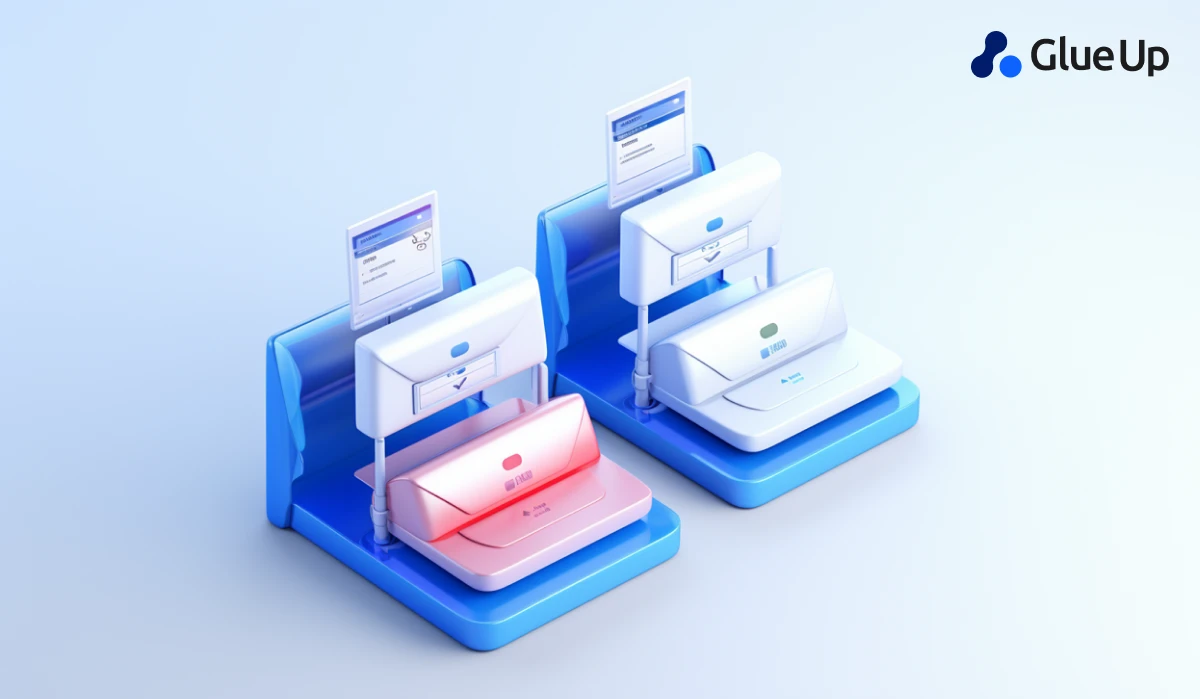
One of the most critical metrics for measuring the effectiveness of an email marketing campaign is the email open rate. It serves as an initial gauge of your campaign's success and provides valuable insights into your member's behavior and interests.
However, maintaining a high email open rate can be a challenging task, given the abundance of information your audience receives daily.
To help you navigate this challenge, we have meticulously curated a list of 17 proven strategies that can substantially boost your email open rates.
From optimizing subject lines to utilizing the power of automation, these strategies offer comprehensive solutions that cater to a wide array of marketing needs and objectives.
Quick Reads
- Why Open Rates Are Important in Email Marketing?
- Optimize the Subject Line
- Personalize Email Content
- Segment Your Email List
- Choose the Right Timing for Sending Emails
- Use Engaging Preheaders
- Maintain a Clean Email List
- Implement Double Opt-In
- Use an Email Management Software
Why Open Rates Are Important in Email Marketing?
Before diving into the strategies, it's essential to grasp the concept and importance of email open rates.
In simple terms, the email open rate represents the percentage of recipients who open a particular email from your campaign. This metric is calculated by dividing the number of opened emails by the total number of emails sent (excluding the bounced ones), multiplied by 100.
The email open rate is a key performance indicator that reflects the initial impact of your email marketing campaign. It helps you understand how well your subject lines are working, whether your timing is optimal, and if your audience finds your content relevant and engaging.
A low open rate could indicate a misalignment between your strategies and audience expectations, while a high open rate suggests that your tactics are hitting the mark.
Strategy #1: Optimize the Subject Line

The subject line is your first chance to grab your recipient's attention, making it a critical factor influencing email open rates. A catchy, well-crafted subject line can spark curiosity and prompt recipients to open your email.
To optimize your subject lines, start by keeping them short and precise, ideally within 50 characters. Use action-oriented verbs to inspire action and avoid using spammy words such as "free", "buy now", or "limited offer" that might lead your email straight to the spam folder.
Additionally, consider using numbers or statistics, as they tend to attract attention and appear more concrete.
Strategy #2: Personalize Email Content
Personalization goes beyond addressing your recipient by their first name. It's about providing content that resonates with them on a personal level, demonstrating that you understand and value their individual needs and preferences.
To personalize your emails, start by using the data you have about your members, such as their preferences, interests, and events they attend. Tailoring your emails based on this data can result in more targeted and relevant content.
Furthermore, use a conversational tone to make your emails feel more human and less robotic. This can help in establishing a strong connection with your audience, encouraging them to interact more with your emails.
Strategy #3: Segment Your Email List

Segmentation is the process of dividing your email list into more specific groups based on certain criteria such as demographics, member behavior, or past interactions. By delivering tailored content to each segment, you can significantly enhance your email open rates.
Segmentation allows you to engage your subscribers with messages that are directly relevant to them, making your emails more personal and targeted. For instance, you might segment your list into new subscribers, and and inactive users, each receiving a different set of emails.
This leads to higher engagement, fewer unsubscriptions, and overall better open rates.
Strategy #4: Choose the Right Timing for Sending Emails
The time at which you send your emails can significantly influence your open rates. Ideally, you want your emails to arrive when your recipients are most likely to be checking their inboxes.
Studies suggest that the best time to send emails is generally during the workweek, especially between Tuesday and Thursday. However, it's crucial to understand that there's no one-size-fits-all approach to timing your emails.
Consider your audience's routines and time zones and experiment with different send times to discover what works best for your list.
Strategy #5: Use Engaging Preheaders
A preheader is a snippet of text that appears right after the subject line in an email inbox. This little line can play a big role in determining whether your recipient will open the email or not.
To craft engaging preheaders, ensure they complement and expand on the subject line, providing more context or enticing the reader to learn more. Keep them concise, and consider incorporating a call to action.
Avoid repeating the subject line verbatim; instead, seize the opportunity to use this space to pique your recipient's interest further.
Strategy #6: Keep Your Content Relevant and Valuable
At the heart of every successful email campaign lies valuable content. If your emails consistently provide meaningful, engaging content, recipients are more likely to open future emails.
Avoid making your emails overly promotional. Instead, focus on delivering value, whether it's through industry insights, useful tips, exclusive deals, or sharing valuable resources.
Strive to understand your members’ needs and interests and aim to deliver content that meets those expectations, keeping your brand top-of-mind and your open rates high.
Strategy #7: Maintain a Clean Email List
A clean email list is critical for maintaining high open rates. Over time, your list can become cluttered with inactive subscribers, invalid email addresses, or people who never engage with your emails.
Regularly pruning your email list helps ensure you're only sending emails to those who are genuinely interested in your content. Implement a habit of removing inactive subscribers or those who have not engaged with your emails for a considerable period.
This not only boosts your open rates but also improves your sender reputation with email service providers, ensuring your emails land in the inbox rather than the spam folder.
Strategy #8: Use Responsive Email Design

With the increasing usage of mobile devices to check emails, it's imperative to ensure your emails look good on all devices. This is where responsive email design comes in, adjusting the layout and content of your email to fit the screen on which it's being viewed.
A responsive email design not only enhances the visual appeal but also improves the user experience, making it easier for your subscribers to interact with your email.
Keep your design simple, use a single-column layout for easy mobile viewing, and ensure your call-to-action buttons are large enough to tap on a mobile screen. Remember, an email that is easy to read and navigate can significantly boost your open rates.
Strategy #9: Leverage the Power of Automation
Email automation is a powerful tool that can significantly boost your email open rates. By
automating your emails through a powerful CRM, you can ensure the right message reaches the right person at the right time.
From welcome emails to event invitations and birthday greetings, automation can help deliver personalized and timely emails to your subscribers. Automation can also assist in segmentation, A/B testing, and tracking analytics, making your email marketing efforts more efficient and effective.
Strategy #10: Implement Double Opt-In
A double opt-in process involves two steps for subscription:
- Firstly, the user fills out a subscription form, and
- Secondly, they confirm their subscription through email.
This ensures that your email list only contains subscribers who genuinely want to receive your emails.
While a double opt-in might lead to slower growth of your email list compared to a single opt-in, the subscribers you gain are likely to be more engaged and less likely to mark your emails as spam.
This leads to better open rates and overall email performance.
Strategy #11: Resend Emails to Non-Openers
Even with a captivating subject line and personalized content, some of your emails may go unopened. This could be due to a variety of reasons such as the email getting buried in the inbox or being sent at a non-optimal time.
Resending the email with a new subject line or at a different time to those who didn't open it initially can provide another chance for your email to be seen. However, this strategy should be used sparingly to avoid spamming your subscribers and should be backed by analytics to ensure it is beneficial.
Read more: 8 Email Marketing Strategies to Engage Association Members
Strategy #12: Use A/B Testing

A/B testing, also known as split testing, involves sending two variants of an email to different segments of your email list to determine which performs better. This could involve testing different subject lines, content, design elements, or send times.
A/B testing is a powerful tool for optimizing your open rates, as it helps you understand what resonates best with your audience. You can gradually increase your email open rates over time by consistently testing and implementing the winning variant.
Strategy #13: Include a Clear Call-to-Action
A clear call-to-action (CTA) is integral to any successful email marketing campaign. A CTA prompts your readers to take a desired action, be it signing up for a webinar, applying for membership, or reading a blog post.
Read more: How to Write a Compelling Membership Invitation Email [with Samples, Examples & Templates]
Having a clear and compelling CTA can influence your email open rates by setting expectations right from the subject line. An effective CTA is concise, uses action-oriented language, and stands out visually in your email.
A/B testing can also be used to experiment with different CTA placements, wordings, and designs to determine what generates the best results.
Strategy #14: Create a Sense of Urgency
Creating a sense of urgency can motivate your recipients to open your emails and take immediate action. This strategy plays on the fear of missing out (FOMO) and can effectively increase your open rates and overall engagement.
This could be achieved by using time-sensitive language in your subject line or offering limited-time discounts or exclusive deals. However, it's essential to use this tactic judiciously and genuinely to maintain trust and credibility with your audience.
Strategy #15: Make Use of Analytics and Metrics

Leveraging email analytics and metrics can provide invaluable insights into your email marketing performance. Metrics such as open rates, click-through rates, bounce rates, and conversion rates can help you understand what's working and what needs improvement.
By continually monitoring these metrics, you can identify trends, test new strategies, and make data-driven decisions to optimize your email open rates. Most email marketing platforms provide robust analytics tools that can aid you in this process.
Strategy #16: Develop a Consistent Sending Schedule
Maintaining a consistent sending schedule can significantly improve your email open rates. When your subscribers know when to expect your emails, they're more likely to engage with them.
Consider your audience's preferences and your content schedule to determine the best frequency for your emails. Whether it's daily, weekly, or monthly, consistency is key.
However, it's equally important to ensure that the quality of content is not compromised in an attempt to maintain a strict email schedule.
Strategy #17: Use an Email Management Software with a High Sender Reputation

Just as the content of your emails is critical for engagement, so too is the platform from which they are sent. Utilizing email marketing software with a high sender reputation is fundamental to achieving high open rates.
An email marketing software with a high sender reputation ensures that your emails reach your subscribers' inboxes, not their spam folders. Internet Service Providers (ISPs) determine sender reputation based on various factors, including the quality of your email content, the frequency of sending, and the engagement levels of your emails.
A high sender reputation gives ISPs the confidence to deliver your emails to the intended recipients, directly influencing your open rates.
What Is the Role of Association Management Software (AMS) in Boosting Open Rates?
For associations, using a dedicated AMS can make a significant difference. An AMS is specifically designed to manage the unique needs of associations, providing tools for member management, event organization, and, notably, email marketing.
Using an AMS with robust email marketing features can streamline your process, help personalize and segment your emails, and automate your campaigns, driving higher engagement and open rates.
How Glue up AMS Can Help Associations Increase Email Open Rates?
Glue Up is an all-in-one AMS solution with a strong emphasis on improving email open rates. It provides a suite of email marketing tools, from email design and personalization to advanced analytics for tracking your campaign performance.
The platform also ensures high deliverability rates due to its high sender reputation. By integrating all association management tasks in one place, Glue Up allows associations to focus on creating valuable content that resonates with their audience, ultimately driving higher open rates.
Frequently Asked Questions (FAQs)
1. What is an email open rate?
Email open rate is a metric that measures the percentage of recipients who open a specific email out of your total number of emails sent. It is a crucial measure of the success of your email marketing campaigns, as it indicates how many people are engaging with your emails.
2. How can I increase my email open rates?
There are several strategies to boost your email open rates, including optimizing your subject lines, personalizing your email content, segmenting your email list, sending your emails at the right time, maintaining a clean email list, and using email marketing software with a high sender reputation, among others.
It's also important to consistently monitor your email analytics and adjust your strategies based on your findings.
3. Why is personalization important in email marketing?
Personalization is vital in email marketing as it makes your emails more relevant to your recipients, leading to higher engagement and open rates.
It can range from simple tactics like addressing the recipient by their name to more advanced strategies like tailoring the email content based on their interests or past interactions.
4. How does A/B testing help improve email open rates?
A/B testing involves sending two versions of an email to different segments of your email list to determine which performs better. It can be used to test various elements of your emails, such as subject lines, content, design, or send times.
By identifying what resonates best with your audience, you can refine your emails to improve your open rates over time.
5. What is the role of an Association Management Software (AMS) like Glue Up in boosting email open rates?
An AMS like Glue Up offers a suite of tools specifically designed for associations, including robust email marketing features. It helps streamline your email marketing process, from designing and personalizing emails to segmenting your list and automating your campaigns.
Moreover, Glue Up has a high sender reputation, ensuring high email deliverability and thus, better open rates.



